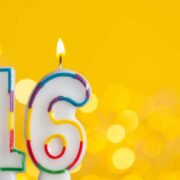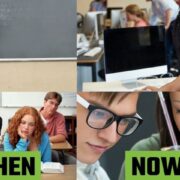To liberal arts or NOT to liberal arts? That is the question.
Some say the traditional liberal arts colleges are dying. Others point out that while some super small colleges are failing financially, the majority are still kicking. We all hear about the huge starting salaries for STEM majors, but we also hear about how employers want students with critical thinking skills that might not be developed in STEM programs. These conflicting statements can be confusing and are all vast generalizations.
Parents don’t want their student to struggle to find a career, but they also don’t want the student to pick a major simply because the resulting jobs pay well. The key is a close examination of the college’s program and how it will fit with a student’s needs and abilities.
Hard skills vs soft skills
For many years, experts have debated on how best to develop a young adult’s mind and how to teach them the wide variety of “things” they should know to be a successful adult. Hard skills and soft skills creep into the conversation, and as parents, we try to fan the flames of our child’s interests and strengths.
When it comes to a college decision (and frankly and more importantly in our experience, the decisions surrounding a major and targeted career), families will hear different pitches from the colleges they tour. Some will espouse their supportive growth environment, the wider base of classes that every student is required to take, and the importance of setting aside a few years to learn to engage and think before jumping into the “hard skills.”
Other colleges share the value of beginning day one in a major, enabling the student to begin to connect to higher level learning in a field of interest and to see how that education can tie directly to work they can enjoy. These latter colleges also require “general education” credits, but the focus can be more on the major program’s details.
So, which is “better?” Neither. Both. It depends.
The key is balance, seeking outside experiences, and finding a program that meets your child’s needs. We don’t want an English major to only go to class and miss out on the development of those specific hard skills and experiences that will lead to career readiness. At some point, a student’s formal education will end, and they will transition to the working world. If this is not a focus/strength of your undergraduate program, then the student will need to work harder for those job connections and be willing to independently seek some work experiences while in college.
On the flip side, a program that is so focused on the hard skills without the opportunity for the exploration of that “softer” critical thinking stuff might not be the perfect fit either. An IT or pharmacy student may benefit from liberal arts courses like philosophy, music, theology, languages, communications, etc. to make them more “well-rounded,” but that doesn’t mean that the student won’t get that experience another way.
Strong writing skills, the ability to listen to and consider other points of view and understand their impact, being able to articulate and argue your own views, a cultivated imagination, appreciation for and the ability to incorporate/allude to works of art and literature, etc. are perhaps more seamlessly attained through a classic “liberal arts” program, but they are potential attributes of any major as long as there is space in the schedule for some variety of courses. Another option is for the student to recognize the need for these qualities and seek them in some form outside their course of study.
The choice needs to be informed and purposely selected.
The needs of the student, the interests of the student, the abilities of the student, the desires of the student – they all come into play, but so will the willingness of the student to make the most of her education by crafting a deliberate plan and allowing for ongoing reflection and adaptation.
The struggle for the student can come when they try to identify their needs, interests, abilities, and desires. For years, Guided Self Assessment has helped students not only look inside themselves to identify these things, but also teach them HOW to do that thinking throughout their lives. Students who know themselves well will be able to visualize possibilities and aspirations and seek out concrete paths toward them.
Guided Self Assessment gets the wheels turning about the world of work, how a student learns best, what experiences during college sound appealing, what are they looking forward to learning, etc. This thinking could lead directly to liberal arts OR to a “direct admit” program for x or y or z major. Our process is hooked to the student. Our suggestions are driven by the needs of the student. The student’s voice drives the process, and it’s a good thing to explore the many paths to success!
College research fits into this as well because the student needs to be able to access the desired opportunities, and this simply works out better when the right questions are asked ahead of time. We tell students in Guided Self Assessment, “There are no right or wrong answers in our conversations…the correct answers are your answers, and you get to them through openness and completeness of thought.”
As long as a student is aware, informed and makes an effort, they can “explore and grow” in college while also accumulating practical skills and taking concrete experiential steps – all of which can happen at a liberal arts college OR in a direct admit program.
The answer to the questions, “To liberal arts or not to liberal arts?” depends on the student. There is validity in any well-informed choice.
Enjoy this post? Don’t want to miss any future blogs about education, college, or careers?









